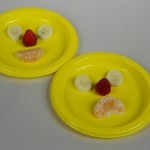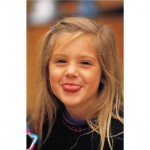Did you know that helping your child learn about feelings and faces is very supportive for playdates, preschool, and kindergarten readiness? Interactions with family members and friends will involve feelings and emotions. Kids need to learn what their feelings are and the words to talk about them.
Learning the names of basic feelings is more than just matching. Kids often need adults to identify or label these feelings for them. For instance, we might need to say to a child “I see that you are sad. Are you feeling sad because your toy broke??” to help a little one understand how s/he feels. Or, “I notice a scowl on your face, kind of a stormy look. That tells me you might be feeling pretty angry. Is that what you are feeling?” Commenting on a child’s feelings, gives the child words that s/he does not yet know and helps make the connection between the words and the feelings. It’s easier for kids to talk about feelings when they know the words.
Some emotions to identify or label for kids might include: happy, sad, angry, scared, surprised, silly, disappointed and calm. Especially calm, so when we ask kids to calm down they know what calm is! Sometimes, when we talk about feelings, we say that we are feeling bad or good. Bad can also mean wrong and that can be confusing for children. They wonder if “bad” feelings like sad and angry are wrong. Using the words “comfortable”or “uncomfortable” feelings can avoid that confusion,.
Faces give clues about emotions but being able to tell what someone else is feeling from their facial expressions takes practice. For a play-of-the-day, here is an idea using food to make faces that show feelings. Or instead of food, making playdough faces is fun, but don’t eat them! Or making faces in the mirror. Or reading a story about feelings. What else can you and your child do for feelings and faces and fun?




